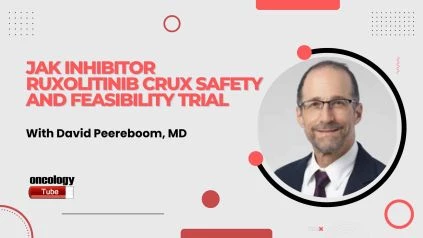Dr. David Peereboom from Cleveland Clinic conducted a phase one clinical trial called CRUX to investigate the efficacy and safety of ruxolitinib, an inhibitor of the JAK/STAT pathway, in treating high-grade glioma patients. The JAK/STAT pathway, when dysregulated, promotes the growth of various cancer cells, including gliomas.
The trial enrolled 60 patients, predominantly male, with a median age of 60 years. Patients were stratified based on their MGMT promoter methylation status, a biomarker associated with treatment response. Patients with methylated MGMT promoters received radiation, temozolomide, and ruxolitinib, while those with unmethylated MGMT received radiation and ruxolitinib alone.
The primary objective of the study was to determine the maximum tolerated dose and evaluate safety. Secondary objectives included assessing overall survival and progression-free survival. The trial started with a lower dose of 10 milligrams of ruxolitinib twice daily, which is half the normal FDA-approved dose for hematologic malignancies.
The overall survival at one year for all glioblastoma patients was 77%, a favorable outcome. Patients with unmethylated MGMT had a median overall survival of 18 months, compared to the historical average of 12 months. Patients with methylated MGMT had a median overall survival that has not yet been reached, indicating a potentially positive outcome.
The maximum tolerated dose for both patient groups was determined to be 20 milligrams of ruxolitinib twice daily, which aligns with the standard dose used for hematologic malignancies.
Toxicities observed in the study included grade three adverse events such as thrombocytopenia, urinary retention, and somnolence. Grade four toxicities, although less frequent, included respiratory distress, somnolence, and deep vein thrombosis.
Based on the study results, the combination of radiation, temozolomide, and ruxolitinib, as well as radiation and ruxolitinib alone, were deemed safe and feasible. Although longer-term follow-up and a larger sample size are necessary, the promising efficacy results have led to plans for a larger phase two trial to further investigate this treatment approach.
The key takeaway from the CRUX clinical trial is the importance of clinical research in advancing medical knowledge and improving patient outcomes. Dr. Peereboom emphasizes the significance of clinical trials and encourages patients to consider participating in them to contribute to the progress of medical science.

